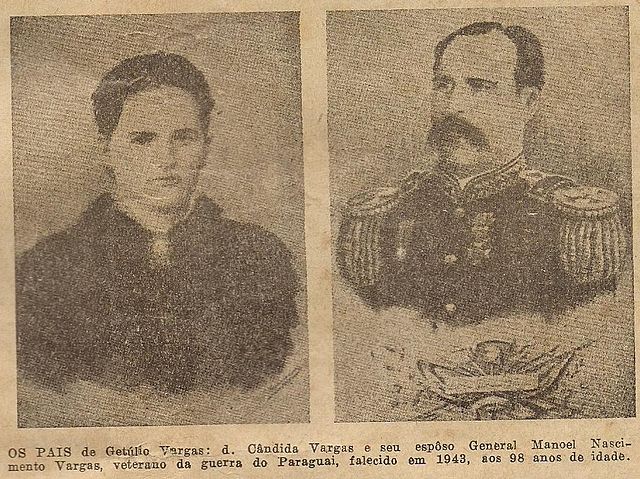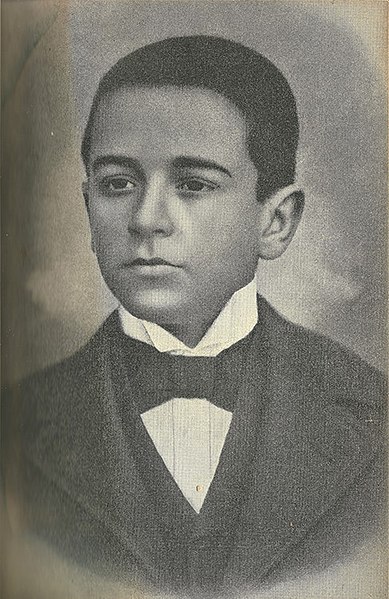The Vargas Era is the period in the history of Brazil between 1930 and 1946 when the country was governed by president Getúlio Vargas. The period from 1930 to 1937 is known as the Second Brazilian Republic, and the other part of Vargas Era, from 1937 until 1946 is known as the Third Brazilian Republic.
Getúlio Vargas after the 1930 revolution, which began the Vargas Era.
Ten cruzeiro banknote, featuring a portrait of President Vargas.
Brazilian propaganda poster announcing a declaration of war on the Axis powers, 10 November 1943. The caption reads: "Brazil at war...Opening the road to victory."
Carmen Miranda was a symbol of the "Good Neighbor Policy", which consisted of a closer relationship with the United States to Latin America.
Getúlio Dornelles Vargas was a Brazilian lawyer and politician who served as the 14th and 17th president of Brazil, from 1930 to 1945 and from 1951 until his suicide in 1954. Due to his long and controversial tenure as Brazil's provisional, constitutional, dictatorial and democratic leader, he is considered by historians as the most influential Brazilian politician of the 20th century.
Official portrait, 1930
Getúlio Vargas' parents, Cândida and Manuel Vargas
Vargas at age 12, c. 1894
Vargas's graduation photo, 1907








